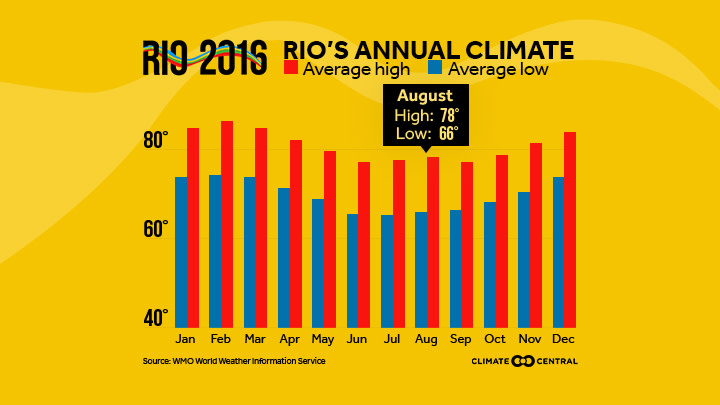The area of Brazil is about the same as the contiguous U.S. Most of Brazil has a tropical climate, but parts of the southern region are more subtropical. The southern end of the country is the same distance from the equator as Dallas. The Olympic Games are being held during the dry and cool season in Rio, as August is the end of winter in the Southern Hemisphere. The average temperature and rainfall in August in Rio make it similar in climate to February in Miami.
Brazil has one-third of the world’s rainforests, as more than half of the Amazon rainforest is within the country’s borders. Its role in the climate system is important, as the Amazon rainforest accounts for 25% of the carbon dioxide absorbed by land each year. Deforestation rates in the Amazon have decreased in the last decade, but the total area continues to decline, with an area the size of Delaware lost in each of the last 5 years. Global and regional climate models indicate the Amazon will become drier and hotter through the century, further stressing the rainforest.
In Rio and most of the country’s Atlantic coast, both temperature and precipitation are projected to climb with climate change. Heavier downpours could worsen the water quality in Rio, as heavier rain leads to more pollutant runoff into waterways, similar to what happened in Florida this summer. Once the rain ends, the leftover stagnant water can create favorable conditions for mosquitoes to thrive and raise the risk of the spread of mosquito-borne illnesses like Zika.
